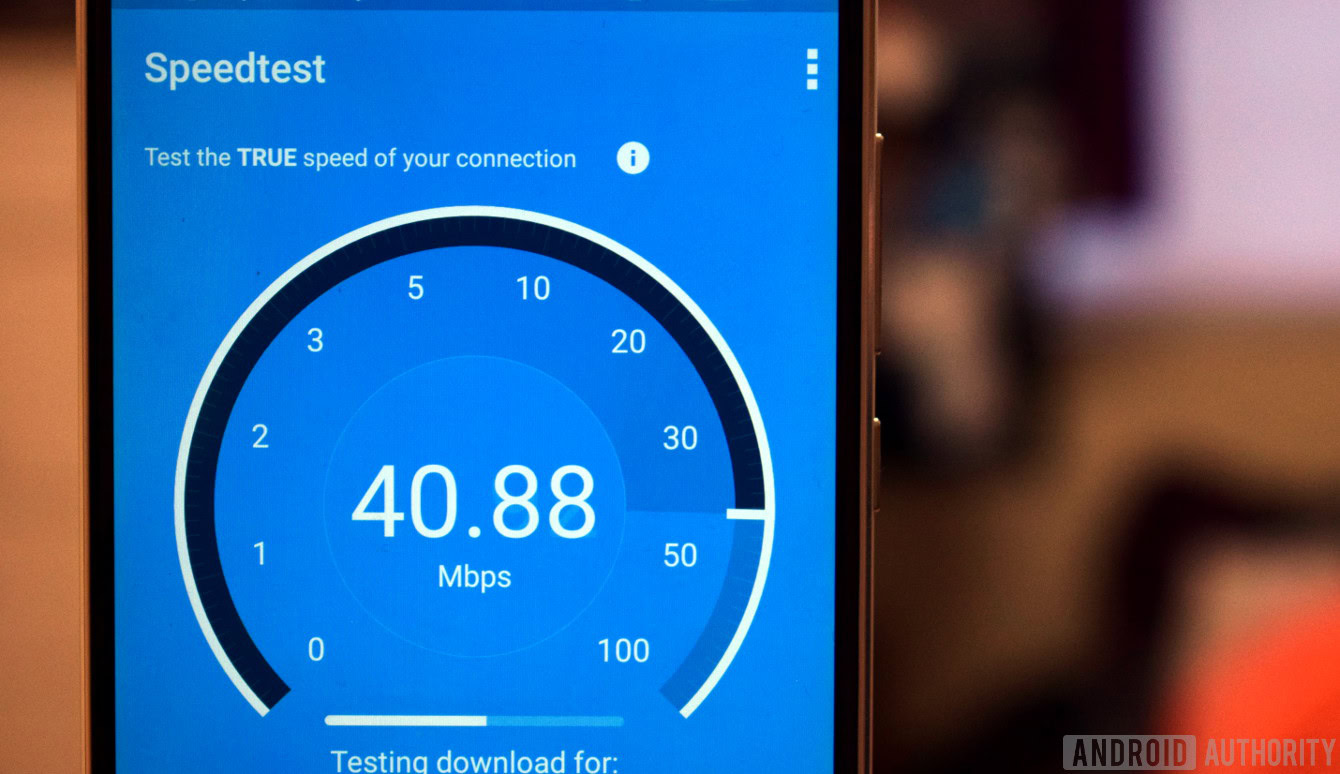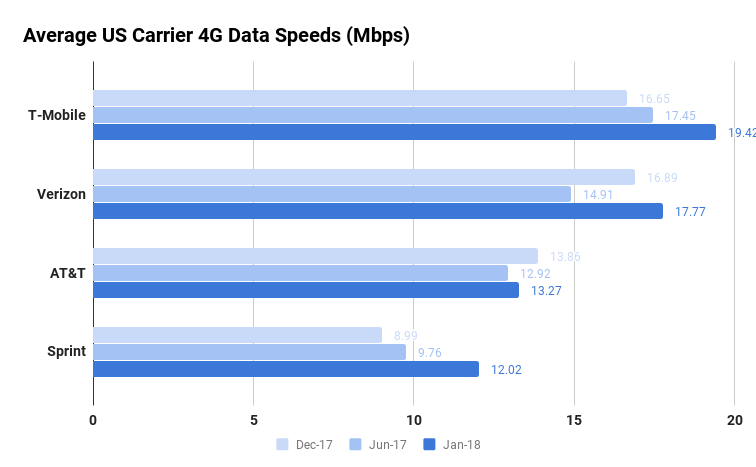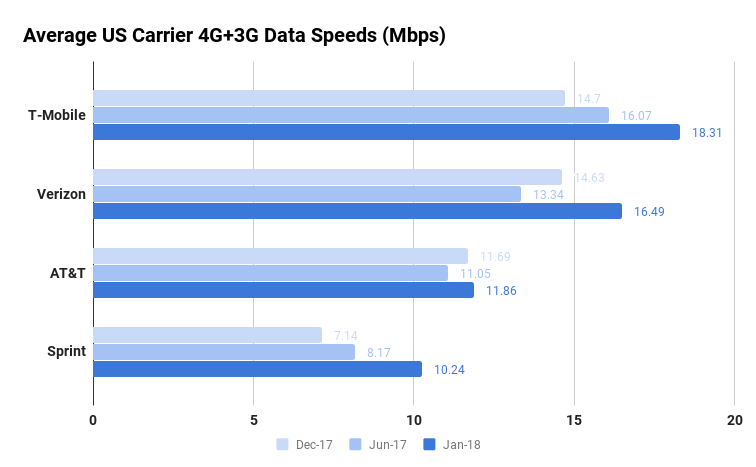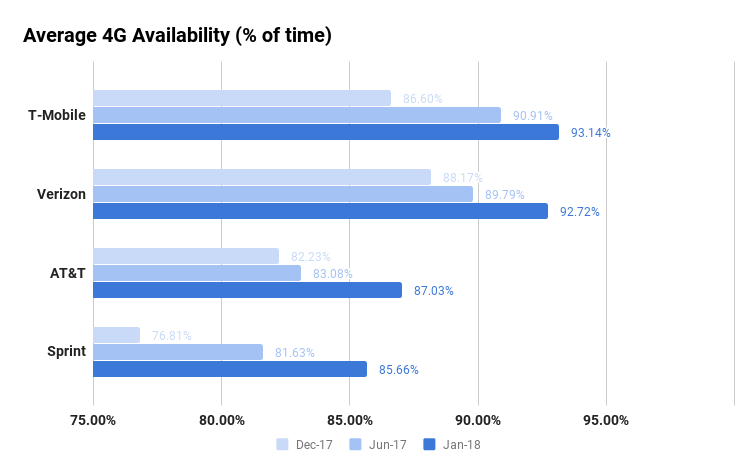Affiliate links on Android Authority may earn us a commission. Learn more.
Report: T-Mobile still has fastest 4G LTE speeds, while Verizon, AT&T slowly recover

Hot on the heels of the revelation that US carriers are finally getting to grips with the demands of offering unlimited data packages, OpenSignal also has a fresh report looking deeper into the state of the country’s mobile networks. The data has been collected from some 237,000 devices running the researcher’s software, and reveals a continuing trend from data collected last year.
Once again, T-Mobile stands out as the best US carrier across all the tests but one: 4G latency. Although that metric is an incredibly close race between all four, and T-Mobile stands out notably ahead when it comes to the most important factors for consumers, namely data speeds and 4G availability.
The fastest possible 4G data speeds are the order of the day, and OpenSignal’s data reveals that T-Mobile continues to lead the field. The carrier, along with Sprint, have managed to weather the demands of unlimited data packages, which have seen both AT&T and Verizon only recently begin to recover from a downtick in typical speeds. You can see this dip on the chart below as a drop in speeds during the mid-point of 2017, following the introduction of unlimited data packages earlier in the year.

As for numbers, T-Mobile offers the fastest typical 4G speeds at 19.2 Mbps, Verizon at 17.8, AT&T on 13.3, and Spring not far behind on 12 Mbps. Still, there’s clearly a big gap between the fastest and slowest of the big four.

T-Mobile has also managed to extend its advantage over Verizon as it struggles to balance speeds with unlimited data, by offering faster over all speeds (4G + 3G) as well. OpenSignal notes that T-Mobile’s HSPA+ network is the best legacy network around by a notable margin. This is a particularly important metric, as 4G networks aren’t always available, especially if traveling away from major built up areas.
Over the past year, T-Mobile’s typical overall speeds have increased by 3.6 Mbps. Meanwhile, Verizon’s speeds have only increased by 1.9 Mbps. AT&T’s speeds offered to consumers have remained even more static, virtually unchanged at just a 0.17 Mbps boost over the past twelve months. Perhaps surprisingly, perpetual underdog Sprint has managed to almost catch up with AT&T, boosting its typical 3G and 4G speeds by 3.1 Mbps over the same period.

Just as important as speed is the availability of a 4G connection. Fortunately there’s data for this too, but it’s worth noting that OpenSignal’s availability data is collected by time spent connected to a 4G network rather than the geographical coverage percentage that carriers will often talk about. This methodology has some advantages in that it more closely reflects real world use cases, but it’s less useful if you travel a lot.
Here we see a much more close run race, with T-Mobile and Verizon breaching the 90 percent mark and essentially having customers covered for 4G with equal measure. AT&T and Sprint are still stuck below the 90 percent barrier, but are also surprisingly close on 87 and 85.6 percent coverage, respectively.

There’s a very general trend across all four carriers here though— access to 4G data has grown substantially over the past year. The four of the big carriers have boosted their 4G availability scores by between 6 and 9 percent in a single year, with Sprint by fast leading the growth, followed by T-Mobile.
Speaking of Sprint, although it may still rank last in all of the above metrics, it is by far the most improved carrier throughout 2017. Both speeds and coverage are up notably compared with a year ago, and Sprint appears to be a viable rival to AT&T. T-Mobile and Verizon remain far ahead from the other two, but there’s also more competition between these two than there was just two or so years ago.
The US carrier market could be about to enter an interesting phase of increased competition in 2018, if Sprint and T-Mobile can manage to maintain their momentum. It also wouldn’t be unprecedented to expect a reaction from Verizon as it no longer appears to be the top dog. Of course, much of this will probably play out in the quickly accelerating race to launch the country’s first 5G network.
Remember that these are generalized trends. Regional performance varies slightly by carrier, so be sure to check out the full report if you want to see a further breakdown of the results and local variations.